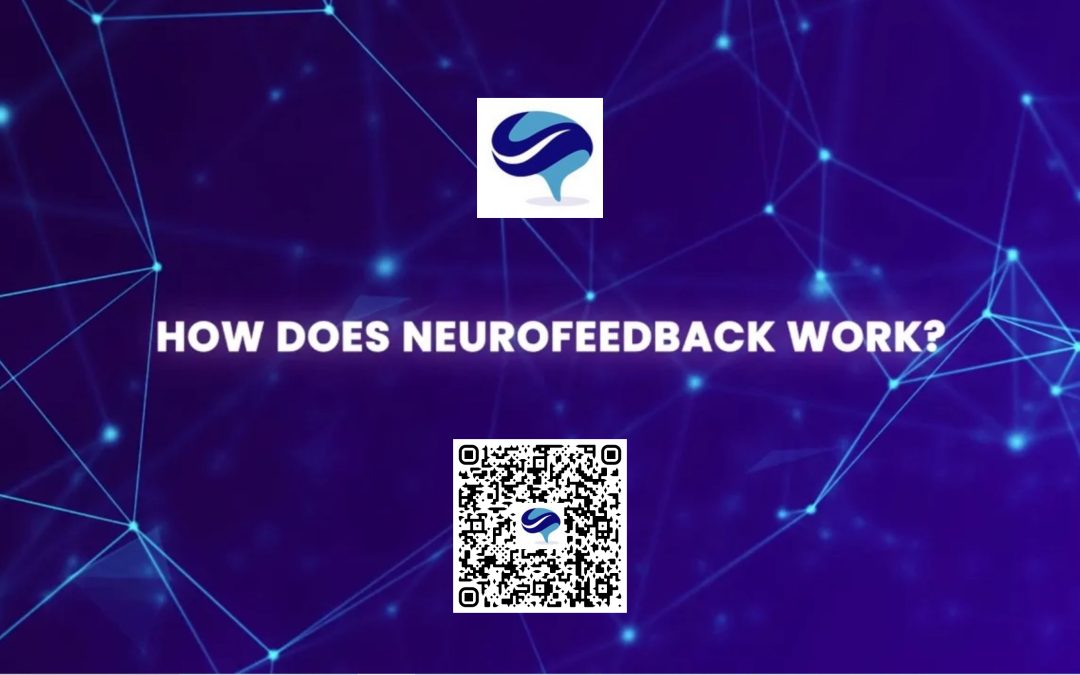Neurofeedback is a form of biofeedback in which a reward signal is provided to the brain. This signal, over time, causes the brain (in most cases) to incrementally and gradually reorganize brainwaves into a healthier and more functional brainwave pattern.
Loading Video...
How does that work?
What we believe is that brains tend to like novelty. So when the brain realizes that it gets a reward tone every time there is a movement in a healthier direction, it tends to absorb that reward tone and start moving in that direction. This process, also called operant conditioning, is a slow, gradual process that happens over time, and every brain varies in its response to some degree.
Let’s say we have a brainwave that we want to bring down because it’s too strong, which is often the case in kids and adults with ADD, anxiety, panic, OCD, and similar disorders. In this case, neurofeedback will provide a reward tone every time this wave dips. Over time, because it is an operant conditioning model, the brain responds to this reward and very slowly changes that brainwave. Coincidentally, with ADD and anxiety disorders, certain brainwaves can be five or six standard deviations above where they should be, which is significant. However, retraining such brainwaves into healthier brainwave forms is just a matter of time.
So, in essence, biofeedback does not inject electricity into the brain or do anything invasive to it; it simply rewards the brain for finding a better brainwave pattern and does it repeatedly. As a result, through operant conditioning, the brain becomes reorganized in ways that feel and function better.
Neurofeedback is a fascinating therapy that holds the promise of improving brain function and addressing various cognitive and emotional issues. Many prospective clients are curious about how long it takes for neurofeedback to produce noticeable results. While the timeline may vary due to individual differences, it is generally safe to say that most adults, children, and adolescents experience some improvements within two to four weeks of starting neurofeedback training. In this article, we will explore the timeline of neurofeedback progress and shed light on the factors that influence its effectiveness.
Understanding the Incremental Nature of Neurofeedback Improvements
Neurofeedback is a gradual and incremental process that unfolds over time. Although significant milestones may not be reached within the initial two to four weeks, individuals often begin to experience a sense of ease and comfort in their daily lives. Improved sleep, enhanced well-being, and increased focus are some of the initial benefits that individuals may notice during this early stage of Neurofeedback training.
The Duration of Neurofeedback Training
Various studies have examined the effects of neurofeedback, particularly when it comes to the number of sessions required for noticeable results. Research suggests that around 30 to 40 sessions of neurofeedback can yield significant improvements in various areas of life satisfaction, depression, and overall well-being. For instance, if an individual’s life satisfaction level increases from zero to three or four, that represents a meaningful improvement that would be considered significant in research studies. Similarly, a decrease in depression from a level of 10 to 7 would also be considered significant progress.
However, it is important to note that most individuals seek more substantial changes and improvements beyond what can be achieved within the range of 30 to 40 sessions. Consequently, neurofeedback training often requires additional sessions. Moreover, the availability of home training options has revolutionized the field, allowing individuals to benefit from increased flexibility and reduced costs. With the option to train at home, people can now engage in Neurofeedback sessions at their convenience, leading to improved outcomes.
Frequently Asked Questions
Q1: Can Neurofeedback produce immediate results? Neurofeedback is not a quick-fix solution, and immediate results should not be expected. It is a gradual process that requires consistency and commitment to achieve lasting changes.
Q2: Are the improvements achieved through Neurofeedback permanent? The improvements attained through neurofeedback can be long-lasting, especially when individuals continue to practice healthy habits and maintain a balanced lifestyle after completing their training.
Q3: Can Neurofeedback benefit children with attention deficit hyperactivity disorder (ADHD)? Neurofeedback has shown promising results in improving symptoms associated with ADHD in children. It can help enhance attention span, impulse control, and overall self-regulation.
Q4: Is Neurofeedback suitable for all age groups? Neurofeedback is a versatile therapy that can be beneficial for individuals of all age groups, ranging from children to adults and even the elderly. It is a non-invasive and drug-free approach to improving brain function.
Q5: How often should Neurofeedback sessions be conducted? The frequency of neurofeedback sessions may vary depending on individual needs and treatment plans. Initially, sessions are often scheduled once or twice a week, gradually reducing to bi-weekly or monthly sessions as progress is made.
Q6: Are there any side effects or risks associated with Neurofeedback? Neurofeedback is generally considered safe and well-tolerated. It is a non-invasive procedure that does not involve any medication. However, it is always recommended to consult with a qualified practitioner to ensure suitability and address any concerns.





